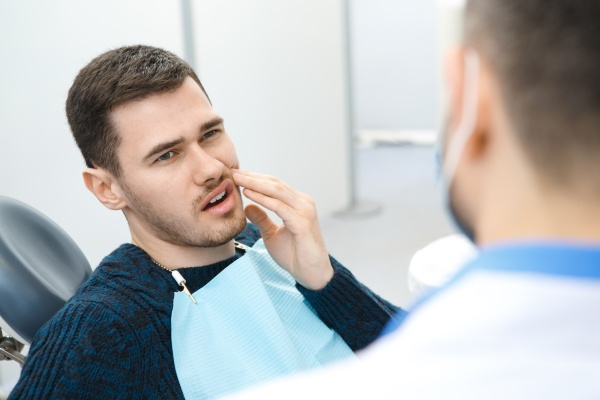Ask a Dentist: What is the Right Sleeping Position for TMJ?

Temporomandibular joint syndrome, commonly referred to as TMJ, is a pain in the jaw joint that can be caused by joint abnormalities, arthritis or other medical conditions. Common treatments include dietary changes, stress reduction, muscle stretching, physical therapy and anti-inflammatory medications. Changing sleep positions can also reduce symptoms in some cases.
How sleep position affects TMJ symptoms
Strain on the head, neck, face or jaw can worsen TMJ symptoms. Waking up with increased levels of jaw pain can be a sign that sleep position is making symptoms worse. How a person positions the body during sleep can affect multiple factors that contribute to jaw pain:
- Teeth grinding and clenching
- Muscle tension and strain in the head, neck and shoulders
- Head and neck support
- Pressure on the head, neck and jaw
Sleep positions that may help and ones to avoid
Sleeping on the stomach or side can push the jaw back towards the skull or to the side, depending on the head position of the sleeper. This increased pressure on the jaw can intensify symptoms. Additionally, turning the head to the side while sleeping may create tension that makes TMJ worse.
Sleeping on the back is considered an ideal position for reducing pain because it avoids pressure on the jaw, keeps the head and neck in better alignment, provides increased support for the head, neck and shoulders and makes it less likely that teeth clenching or grinding will occur. However, it is important to avoid creating tension in the neck by elevating the head too much. Back sleepers should avoid using pillows that are too firm or too thick and refrain from propping their heads up with their hands because this can create neck strain.
Pressure on the jaw can be further reduced by training the tongue to rest on top of the teeth. Relaxing the tongue on top of the teeth helps to keep the jaw slightly open, which can reduce the chance that teeth clenching or grinding will occur.
Sleeping flat on the back can make some health conditions such as sleep apnea and acid reflux worse. People who have health issues that may be impacted by their sleep habits should consult with a doctor to determine whether changing sleep position is an appropriate TMJ treatment option.
Adjusting to a new sleep position
According to sleep surveys, only about 10-15% of people sleep on their backs, and many individuals have difficulty adjusting to back sleeping. This transition can be made easier by placing a small pillow under the arch of the spine and sleeping on an adjustable mattress or a mattress that conforms to the body. A supportive orthopedic pillow may also help hold up the neck. Experimenting with different arm and leg positions may also increase comfort. However, placing the arms over the head should be avoided.
Conclusion
Patients with persistent jaw pain should consult a medical professional for an evaluation of the problem and determination of appropriate treatment options. Changing sleep positions can be helpful for many people, but they may not work for everyone.
Request an appointment here: https://www.mytotaldentistry.com or call McCarthy Dentistry at (740) 546-5178 for an appointment in our Marietta office.
Check out what others are saying about our services on Yelp: Read our Yelp reviews.
Recent Posts
Preventative dental care refers to all the ways you can maintain the health of your teeth and gums, which will ultimately help prevent more severe issues down the road. One great way to provide this type of care is through treatments, including scaling and root planing, periodontal therapy, and laser gum surgery. The following are…
Preventative dental care involves keeping up with routine dental visits and recommendations, and it requires you to take an active role in your oral hygiene. Failure to do so can lead to plaque buildup and an increased likelihood of tooth decay, gum, tooth disease, and worse. The ADA recommends regularly flossing and brushing your teeth…
Many things go into good preventative dental care. One of the most important is brushing your teeth, but it's not something that people always do correctly. Today, we will talk about brushing your teeth correctly and why it's so crucial in preventative dental care.First, you need to use an actual toothbrush. There are many options…
Screening for oral cancer is an important part of preventative dental care. Unfortunately, oral cancer is a disease that is not often talked about. Very few events support oral cancer research and awareness, even though oral cancer takes one life every day in the United States. Many people do not seek or receive treatment until…


